Driven by the rapid development of astronomical studies pursued by researchers at different astronomical observatories under its administration, the Chinese Academy of Sciences (CAS) has designed and built a series of large-scale facilities for astronomical observations over the past four decades. Among them are some high-profile ones, represented by the Large Sky Area Multi-Object Fiber Spectroscopic Telescope (LAMOST) and the Five-hundred-meter Aperture Spherical radio Telescope (FAST).
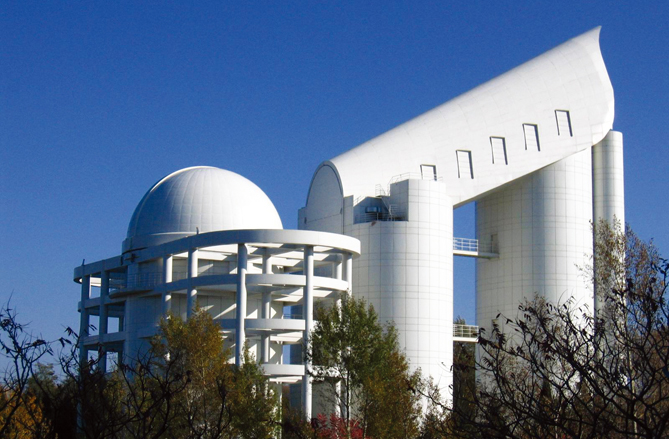
The Large Area Multi-Object Fiber Spectroscopic Telescope (LAMOST), the biggest Schmidt reflecting telescope in the world, is located in the Xinglong Station under the National Astronomical Observatories, CAS. (Credit: NAOC)
Large Sky Area Multi-Object Fiber Spectroscopic Telescope
Located on the mountains of Xinglong County in suburban Beijing, the Large Sky Area Multi-Object Fiber Spectroscopic Telescope (LAMOST) is the biggest wide field-of-view telescope in the world. It represents an ambitious application of active optics in a Schmidt reflecting telescope, to solve an optical dilemma.
For Schmidt reflecting telescopes, it is a “mission impossible” to offer both a large aperture and a large field of view, because for traditional optical designs, the larger the aperture, the smaller the field of view obtained. Formed by a mosaic of segmented submirrors, the Schmidt corrector of the telescope is able to deform in real time to achieve optimized imaging and obtain a wide field of view with a big aperture. In this way, at different moments the mammoth telescope can be tuned to different focuses to acquire high-quality spectra for targeted stars. The 4,000 fibers installed on its focal plane, each driven by tiny, accurate positioning units, can effectively collect and transfer the light from distant and faint celestial objects down to 20.5 magnitude to the spectrographs.

LAMOST consists of a reflecting Schmidt corrector MA (low right in the picture) at the northern end, a spherical primary mirror MB (upper left in the picture) at the southern end and a focal plane in between. Both the primary mirror and the focal plane are fixed on their ground bases, while the reflecting corrector is left free to track the motion of celestial objects. A total of 4,000 optical fibers are installed on the focal plane in between, being connected to 32 CCD detectors. During an observation, the fibers transmit the starlight focused on them to the spectrographs beneath the focal plate, where the starlight is decomposed into spectra. (Credit: NAOC)
Completed in 2008, LAMOST ranked the largest Schmidt reflecting telescope in the world. It is also the most productive spectra collector in the world, being able to obtain ten-thousands of spectra per night.
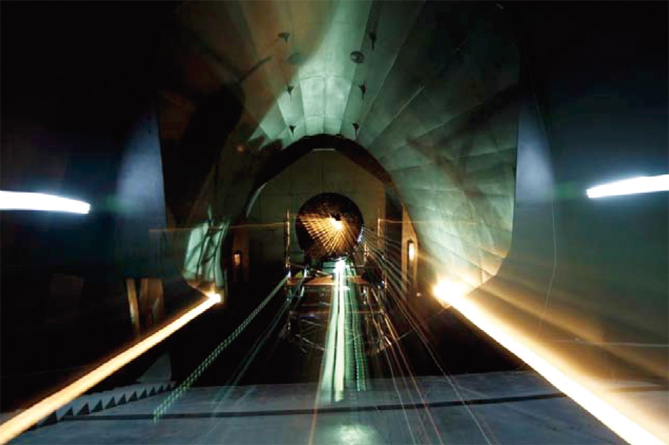
Light beams glitter inside the huge tube of LAMOST. This mammoth astronomical telescope represents the most challenging application of active optics so far, having achieved both an extremely large field of view (5 degree) and a big aperture (7.8m). (Credit: NAOC)
After passing the verification in 2009, LAMOST began its optical survey from October 2011. As of June 2018, it has released over 10 million spectra, feeding an astronomical database of the most complete coverage, the biggest survey volume, the highest sampling density, the most statistically consistent and the biggest sample set.
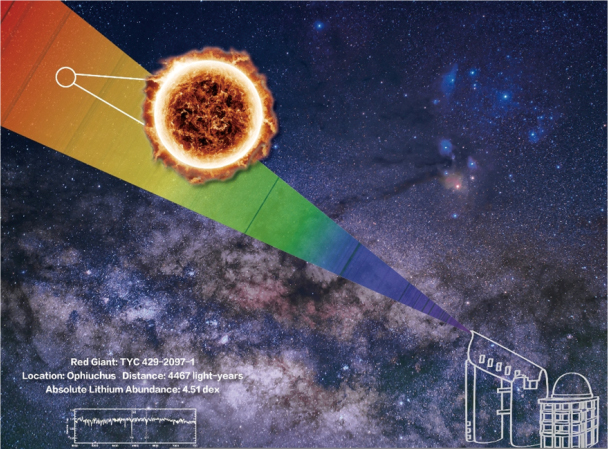
Based on the data obtained by LAMOST, a research team successfully discovers a Li-rich giant star and determines its location in the Galaxy. (Credit: NAOC)
In August 2018, based on data obtained by LAMOST, a research team discovered an extremely lithium-rich giant whose lithium abundance is 3,000 times higher than normal ones. This marked the most lithium-rich giant ever known by human beings. Astronomers domestic and international have benefited a lot from this facility in their explorations into different issues, including the formation and evolution of the Milky Way, the multi-waveband cross-identification of celestial objects, and galaxy physics.
Five-hundred-meter Aperture Spherical radio Telescope
Known as the biggest single dish radio telescope of the best sensitivity, the Five-hundred-meter Aperture Spherical radio Telescope (FAST) was designed and built taking advantage of the natural depression of a basin in the local Karst landscape of Guizhou Province in southwestern China. Started in 2011, the project has attracted a lot of attention.
Completed in September 2016, the facility has since undertaken a series of pilot observations and detected a lot of celestial objects. In April 2018, its first detection of a millisecond pulsar got internationally verified. By the end of August 2018, the facility still under debugging has detected a total of 44 pulsars.
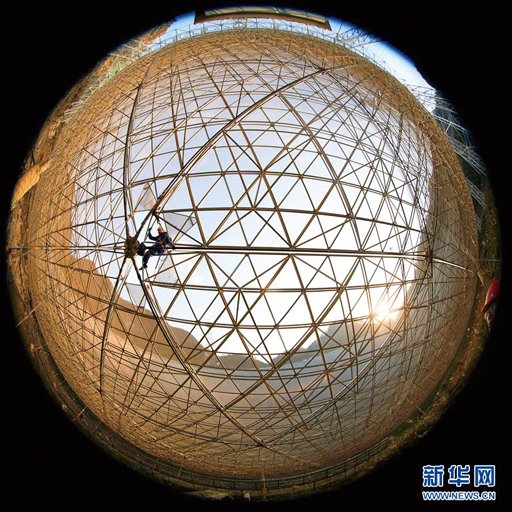
FAST in maintenance. (Photo: Xinhua)
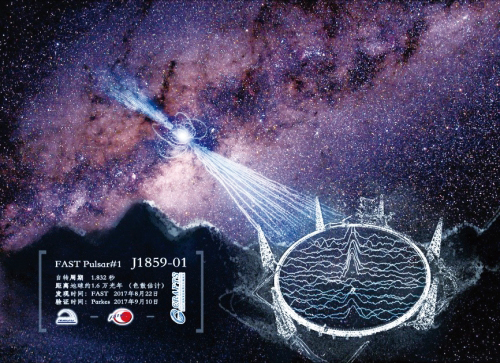
FAST detects a pulsar that was later named J1859-01. (Credit: NAOC)
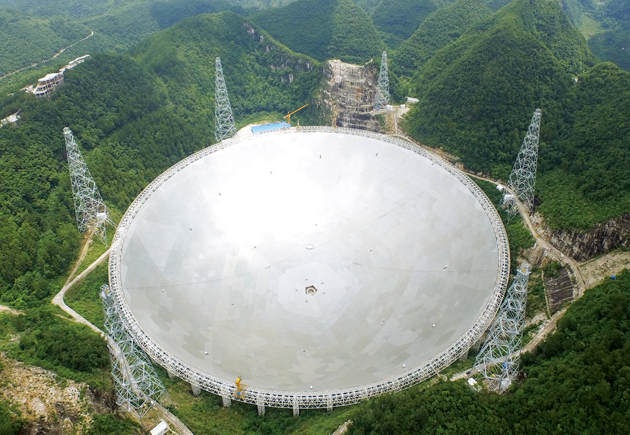
The FAST as seen from the air. (Credit: NAOC)
Other Major Telescopes
The Solar Magnetic Field Telescope initiated by the Beijing Astronomical Observatory, and the BPL Long-Wave Time Transmission system built by the National Time Service Center (previously called Shaanxi Astronomical Observatory) respectively won a First Prize from the National Awards for Science and Technology Progress in 1988. The 1.56-meter astrometric telescope initiated by the Shanghai Astronomical Observatory won a First Prize from the National Awards for Science and Technology Progress in 1992.
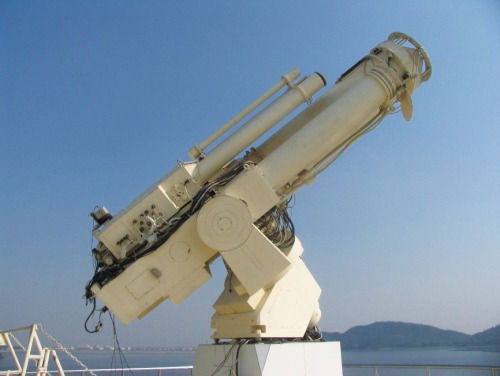
The Solar Magnetic Field Telescope at the Huairou Solar Observatory administered by NAOC (Credit: NAOC)

The 2.16m telescope is the first 2-meter class astronomical telescope designed and built by Chinese astronomers and engineers. (Credit: NIAOT)
Other facilities built during this period of time for astronomical observations also play an important role in research. The 2.16m optical telescope initiated by the Nanjing Institute of Astronomical Optics & Technology is the first 2-meter class astronomical telescope designed and built by Chinese astronomers and engineers. It won a First Prize from the National Awards for Science and Technology Progress in 1998. The Shanghai 65-meter radio telescope (the “Tianma”) initiated by the Shanghai Astronomical Observatory played an important role in the Lunar and Deep Space Exploration of China.

The 1.56-meter astrometric telescope (Credit: SHAO)
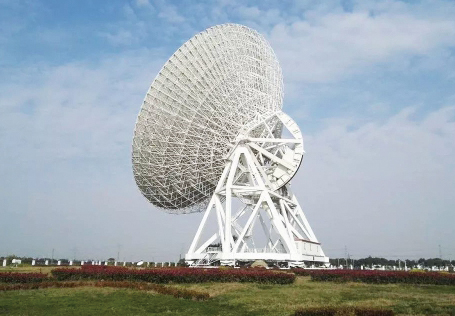
The Shanghai 65-meter radio telescope (Credit: SHAO)

